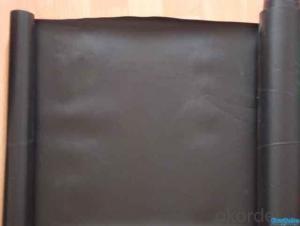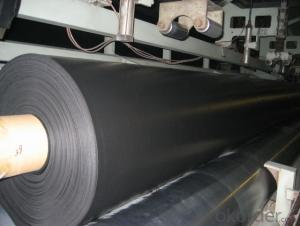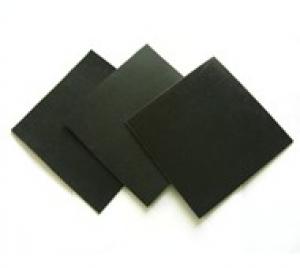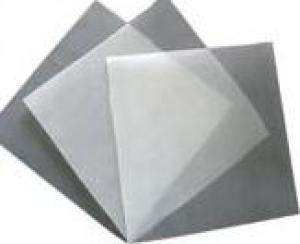Bgm Geomembrane Non Woven Needle Punch Polyester Fabric Geotextile for Road Construction
- Loading Port:
- Qingdao
- Payment Terms:
- TT OR LC
- Min Order Qty:
- 10000 m²
- Supply Capability:
- 500000 m²/month
OKorder Service Pledge
OKorder Financial Service
You Might Also Like
Structure of High Tensile Waterproof Nonwoven Fabric Geotextile Description:
High strength,anti-aging,anti-acid and alkali,abrasion resisting,flexibility,and easy for constructjion.
Main Features of the Waterproof Nonwoven Fabric Geotextile:
The geotextile is made of polypropylene staple fibers on cross-laying equipment and needle punched equipment.
Used in dam, tunnel, reservoir, channel and roofing for anti-leakage, It laso used in scrap yard protection.
Water conservancy project and hydropower project
Road paving,railway
Airport and port
River bank protection and tunnel
Environmental protection, etc
Waterproof Nonwoven Fabric Geotextile Images

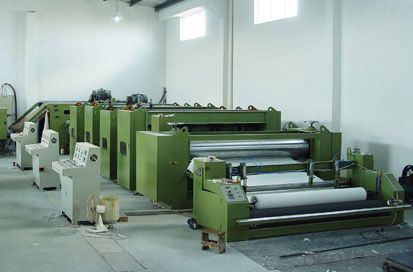


Waterproof Nonwoven Fabric GeotextileSpecification:
1.plastic woven geotextile for dam
2.Materials:PP
3.Tensile strength:15~100kn/m
4.Unit weight:100~400g/m2
5.Width:1 ~6m
| Item | Value | Note | ||||||||||
| 100 | 150 | 200 | 250 | 300 | 350 | 400 | 450 | 500 | 600 | 800 | ||
| Weight Variation(%) | -8 | -8 | -8 | -8 | -7 | -7 | -7 | -7 | -6 | -6 | -6 | |
| Thickness(mm)≥ | 0.9 | 1.3 | 1.7 | 2.1 | 2.4 | 2.7 | 3 | 3.3 | 3.6 | 4.1 | 5 | |
| Width Variation% | -0.5 | |||||||||||
| Breaking Strength( KN/m)≥ | 2.5 | 4.5 | 6.5 | 8 | 9.5 | 11 | 13 | 14 | 16 | 19 | 25 | MD and TD |
| Elongation at break% | 25-100 | |||||||||||
| CBR Mullen Burst Strength KN≥ | 0.3 | 0.6 | 0.9 | 1.2 | 1.5 | 1.8 | 2.1 | 2.4 | 2.7 | 3.2 | 4 | |
| Sieve Size O90(mm) | 0.07-0.2 | |||||||||||
| Vertical Permeability Coefficient cm/s | K×(10-1-10-3) | K=1.0-9.9 | ||||||||||
| Tearing Strength KN≥ | 0.08 | 0.12 | 0.2 | 0.2 | 0.2 | 0.3 | 0.3 | 0.4 | 0.4 | 0.5 | 0.6 | MD and TD |
FAQ
We have organized several common questions for our clients,may help you sincerely:
Q1: How about your company?
A1:Our company are one of the largest geosynthetic products supplier in the world.We have the products experience more than 20 years.Already export to USA/Germeny/Australia/Zambia/Brazil etc.more than 20 countries.Almost 10years.Our products including Geocell/Fiberglass Geogrid/Geomembrane/Geotextile/Geonet etc.
Q2.Does your products have good qualitity?
A2:Yes,we have do many big projects such as the 2008 Beijing Olympic BIRD NEST. Divert water from the south to the north project. And our products have CE certificate also.
Q3:How long can we receive the products after purchase?
A3:In the purchase of product within three working days, We will arrange the factory delivery as soon as possible. The pecific time of receiving is related to the state and position of customers.Commonly 15-20 working days can be delivery.
- Q: Can geomembranes be used in stormwater detention systems?
- Yes, geomembranes can be used in stormwater detention systems. Geomembranes are impermeable liners that can effectively contain and manage stormwater runoff, preventing it from infiltrating the ground. They can be used to line detention ponds, basins, and other stormwater management structures, helping to reduce flood risks and control water flow.
- Q: Can geomembranes be used for geothermal energy storage?
- Yes, geomembranes can be used for geothermal energy storage. Geomembranes are impermeable barriers that can effectively contain and store fluids, including geothermal fluids used for energy storage. They can help prevent the loss of heat or the contamination of surrounding soil or water, making them suitable for geothermal energy storage applications.
- Q: Can geomembranes be used for geotextile protection?
- No, geomembranes cannot be used for geotextile protection as they serve different purposes. Geomembranes are impermeable liners used for containment applications, while geotextiles are permeable fabrics used for filtration, separation, and reinforcement.
- Q: What are the typical costs associated with geomembrane installation?
- The typical costs associated with geomembrane installation can vary depending on factors such as the size and complexity of the project, the type and quality of geomembrane material used, site preparation requirements, and labor costs. Generally, the costs can range from a few dollars per square meter for simple installations to several tens of dollars per square meter for larger and more complex projects. It is recommended to obtain quotes from reputable contractors and consider all necessary expenses to get an accurate estimate for a specific installation.
- Q: How to use the mobile phone laminator?
- Mobile phone laminator has many advantages, such as wide compatibility, good effect of sticking film, simple operation, multipoint operation, safety and saving materials; mobile phone laminator is fully compatible with the brand transparent protective film and a variety of digital products, such as mobile phones, MP3, MP4, camera, remote controller and notebook computers. It is fully mechanized in the whole process, sticking the mobile phone film is remarkably smooth with no bubbles and no wrinkles. Besides, it has good safety and free of grilling. Fool-type operation just need to press the button, it will have the best quality, you do not spend much time to practice the sticking film technology, everyone can become a master of sticking the film, it can be finished the whole process in three minutes, which reduce the waiting time of customer, and improve the efficiency of 5 to 10 times. A machine is equal to three skilled master, you make money faster and easier. Mobile phone laminator is equipped with a variety of templates with flexible configuration, which can save the raw materials. It reduce the consumable items by 50% to 80% than the fixed consumable items area of tranditional sticking method.
- Q: Does geomembrane has the color of grey?
- The color of the geomembrane is mostly black, and also green, white, gray, black green and other colors. The main material of geomembrane is high density polyethylene, auxiliary materials are antioxidants, anti UV agent, carbon black, masterbatch and so on, color of the geomembrane depending on the colour of added masterbatch. There is also geomembrane without auxiliary material, and it is transparent.
- Q: How do geomembranes handle ground settlement?
- Geomembranes are designed to be flexible and stretchable, which allows them to accommodate ground settlement. When the ground beneath a geomembrane settles, the geomembrane can conform to the new shape, preventing any tearing or damage. Additionally, geomembranes can be installed with specialized anchoring systems that provide extra support and prevent movement in areas prone to settlement. Overall, geomembranes are engineered to effectively handle ground settlement and maintain their integrity.
- Q: What is the principle of ceramic membrane ?
- A layer of glaze will be formed in the process of firing .
- Q: Can geomembranes be used for agriculture irrigation?
- Yes, geomembranes can be used for agriculture irrigation. These impermeable synthetic liners are commonly employed in agriculture to line canals, reservoirs, and ponds, helping to prevent seepage and water loss. By using geomembranes, farmers can effectively store and distribute water for irrigation, thereby improving water efficiency and maximizing crop yield.
Send your message to us
Bgm Geomembrane Non Woven Needle Punch Polyester Fabric Geotextile for Road Construction
- Loading Port:
- Qingdao
- Payment Terms:
- TT OR LC
- Min Order Qty:
- 10000 m²
- Supply Capability:
- 500000 m²/month
OKorder Service Pledge
OKorder Financial Service
Similar products
Hot products
Hot Searches
Related keywords





























